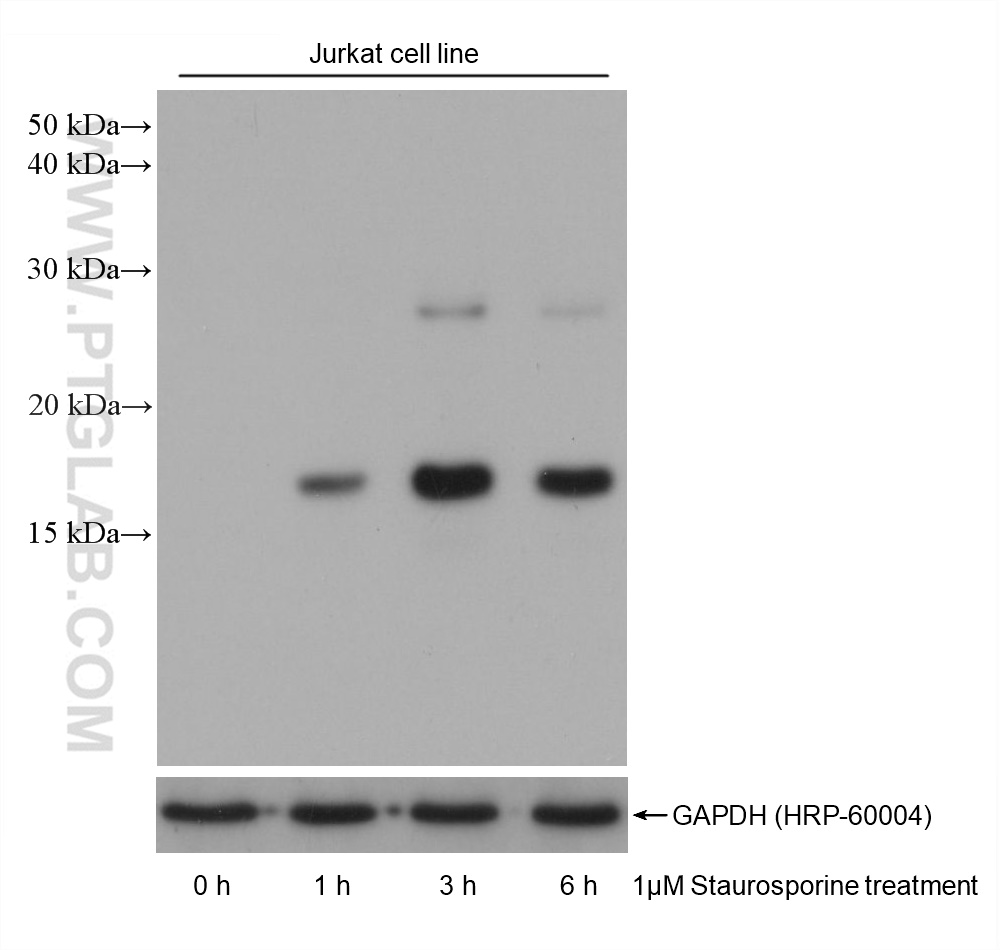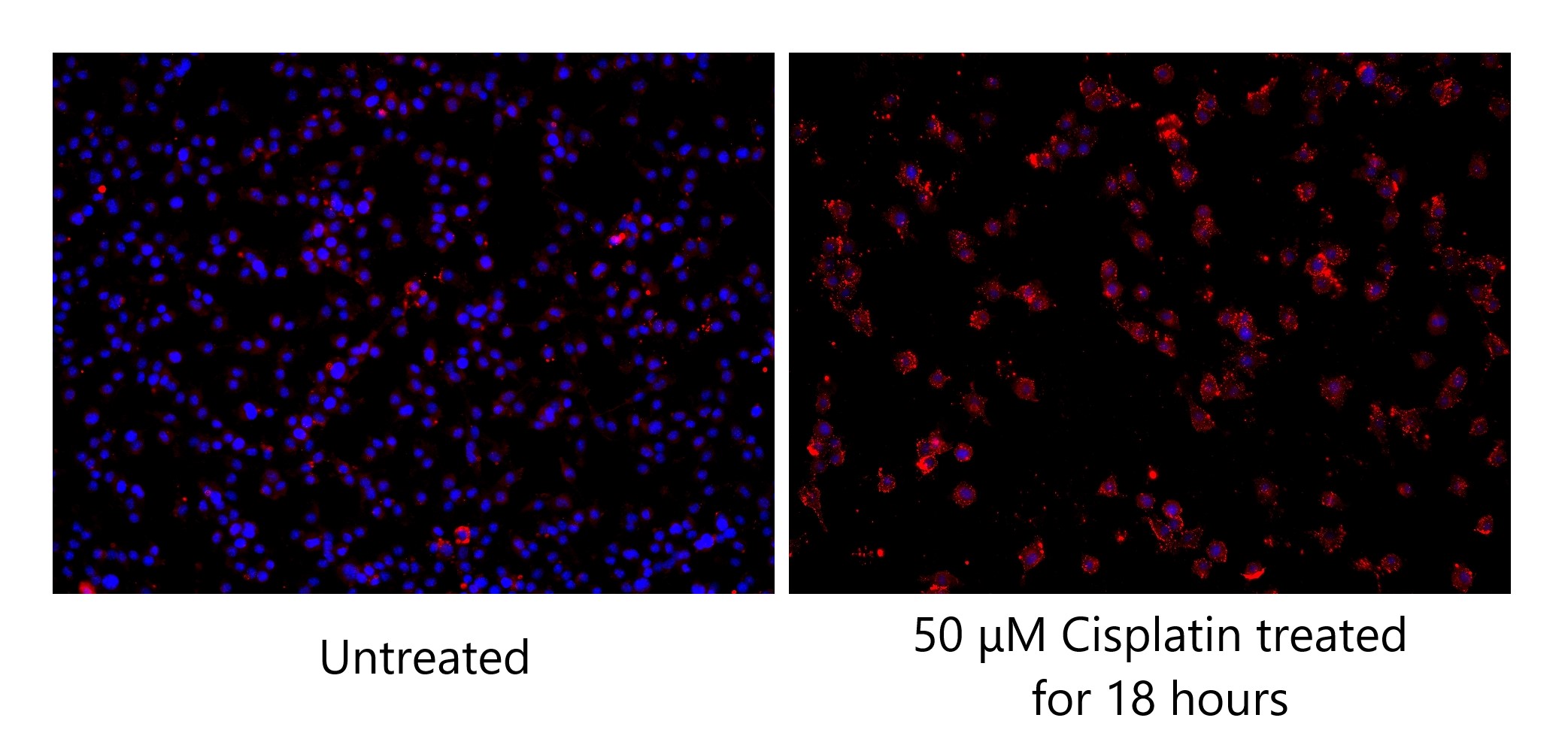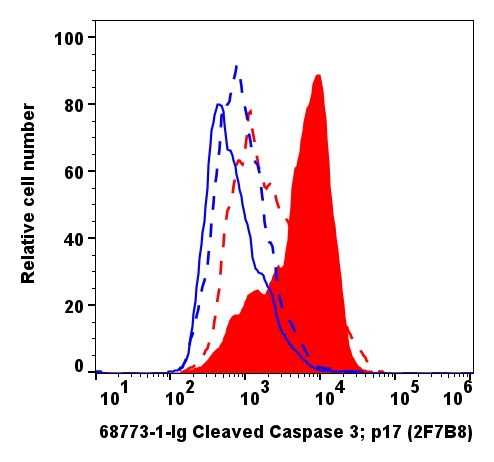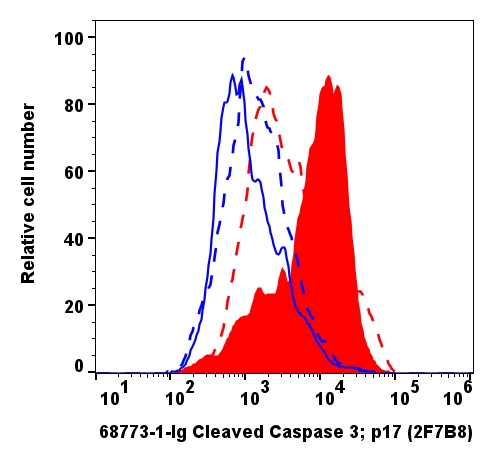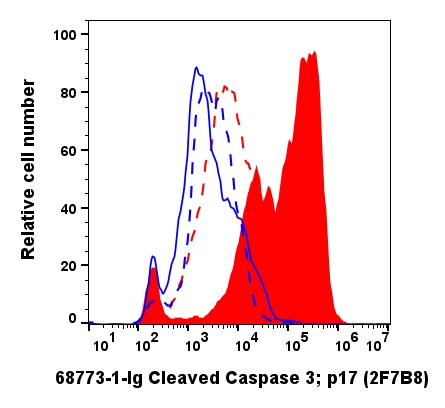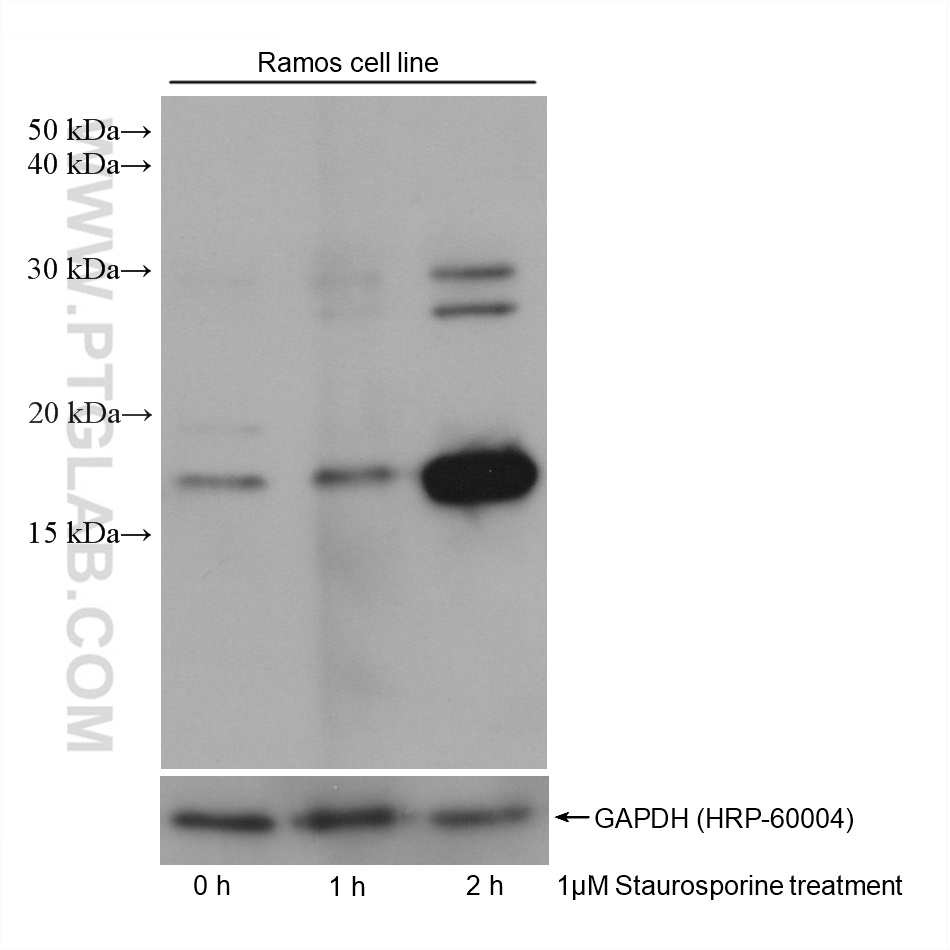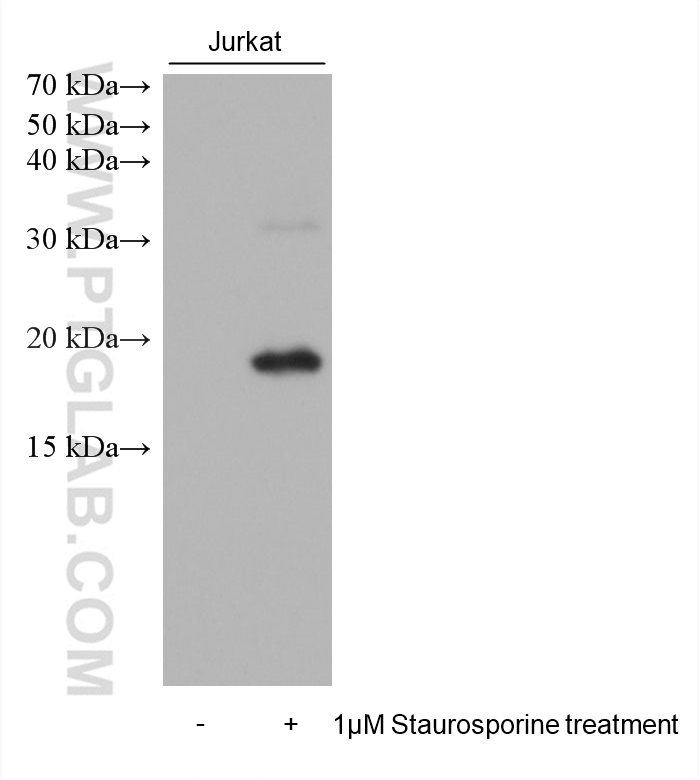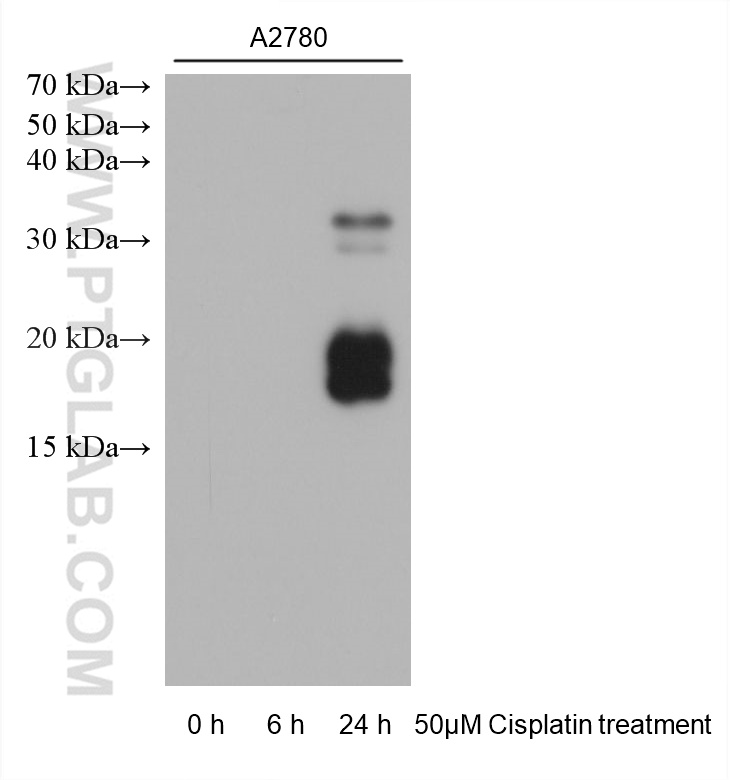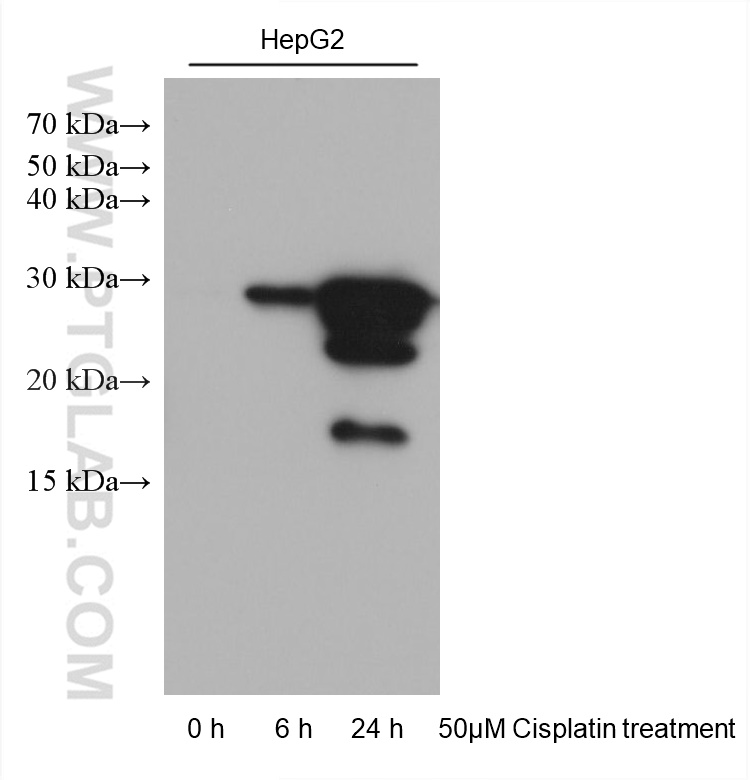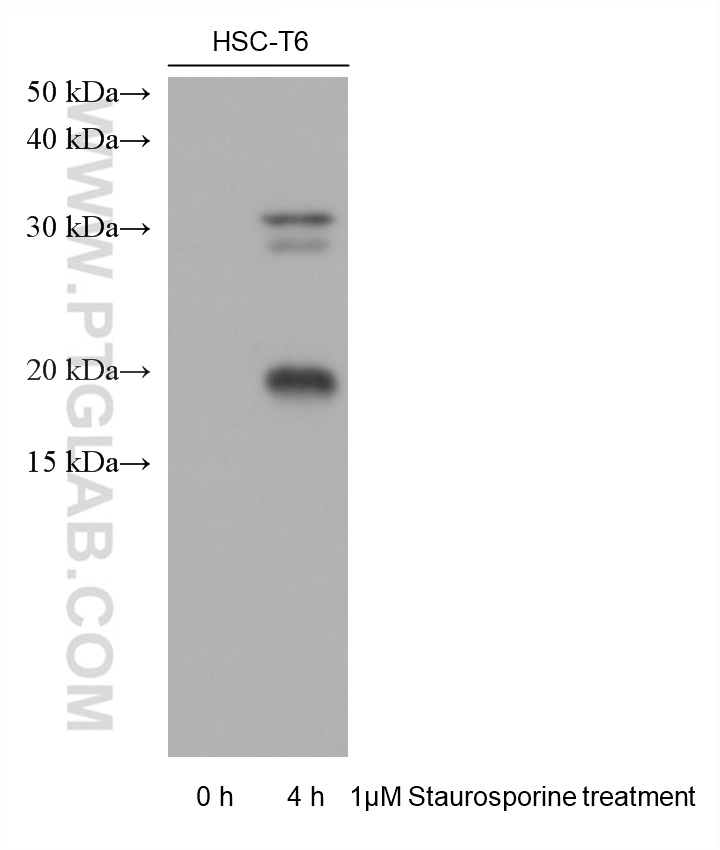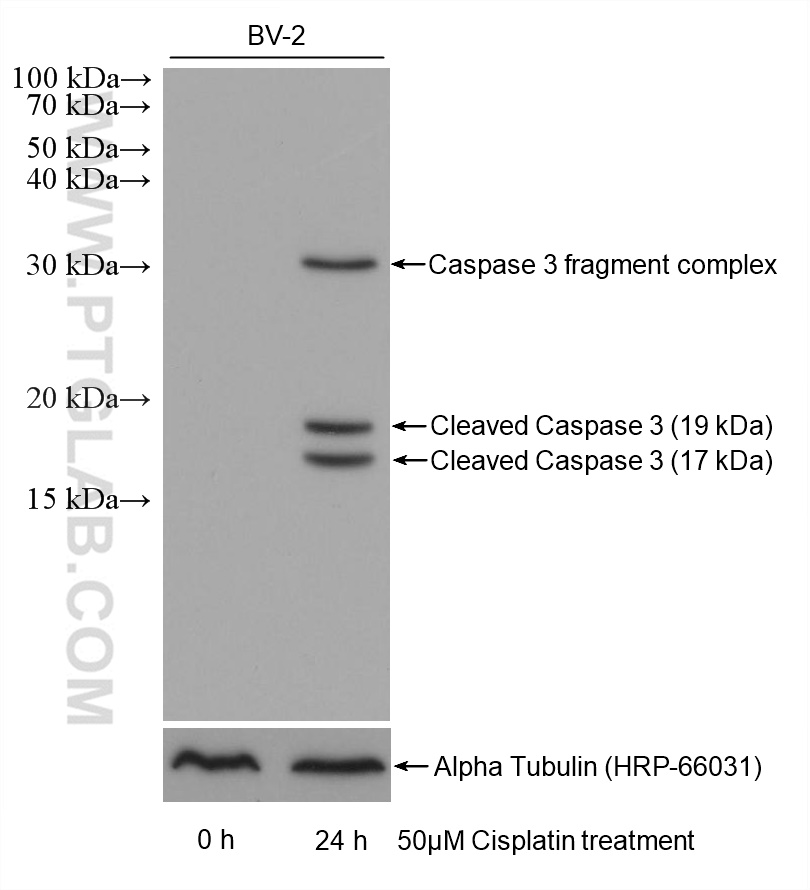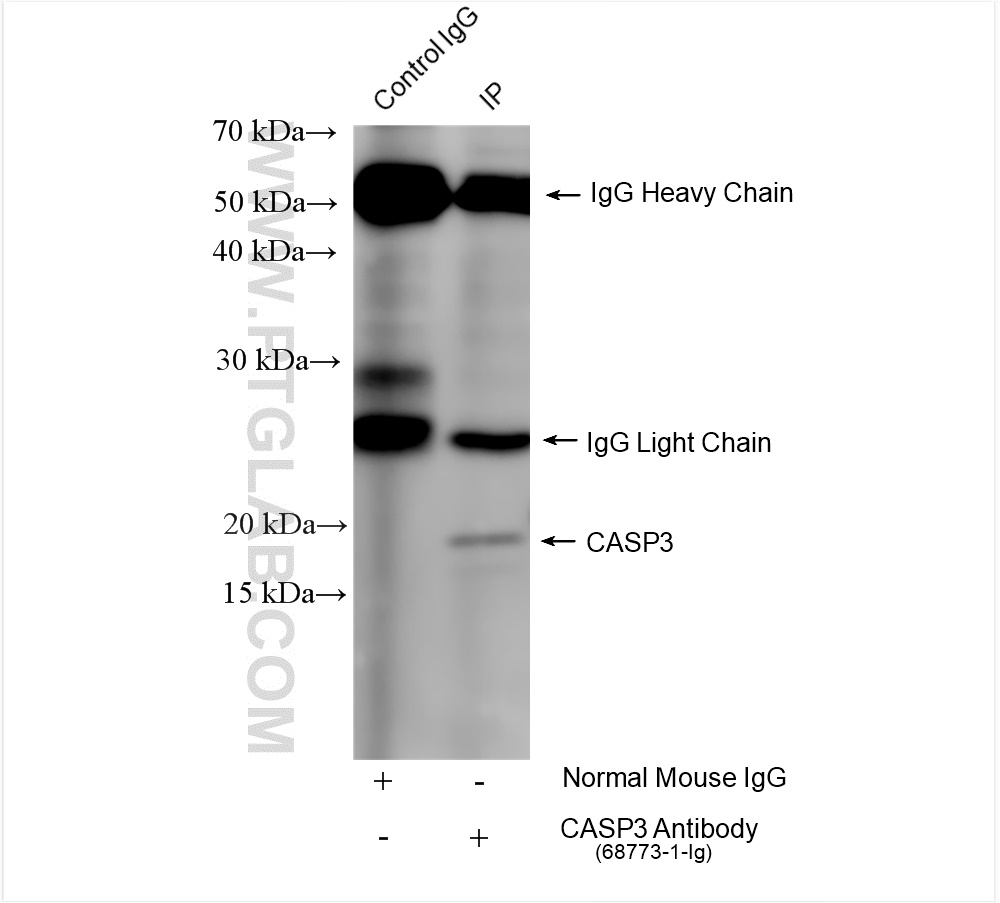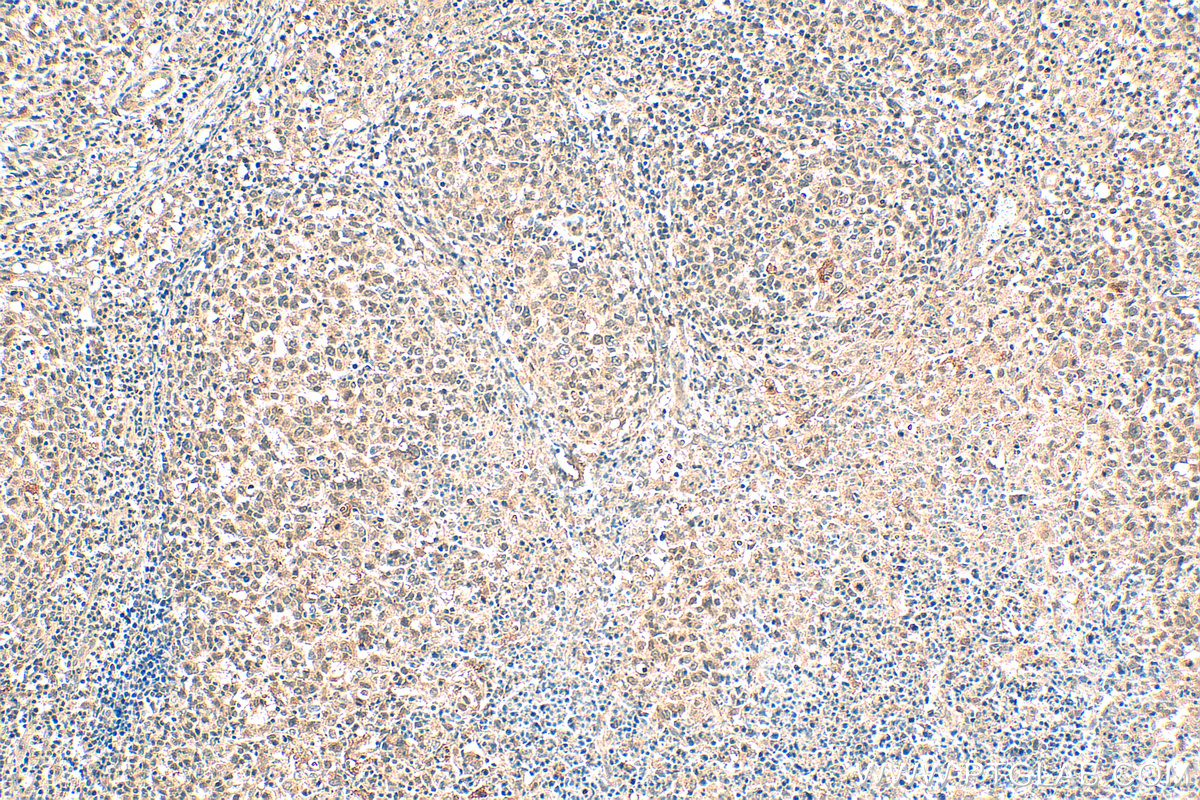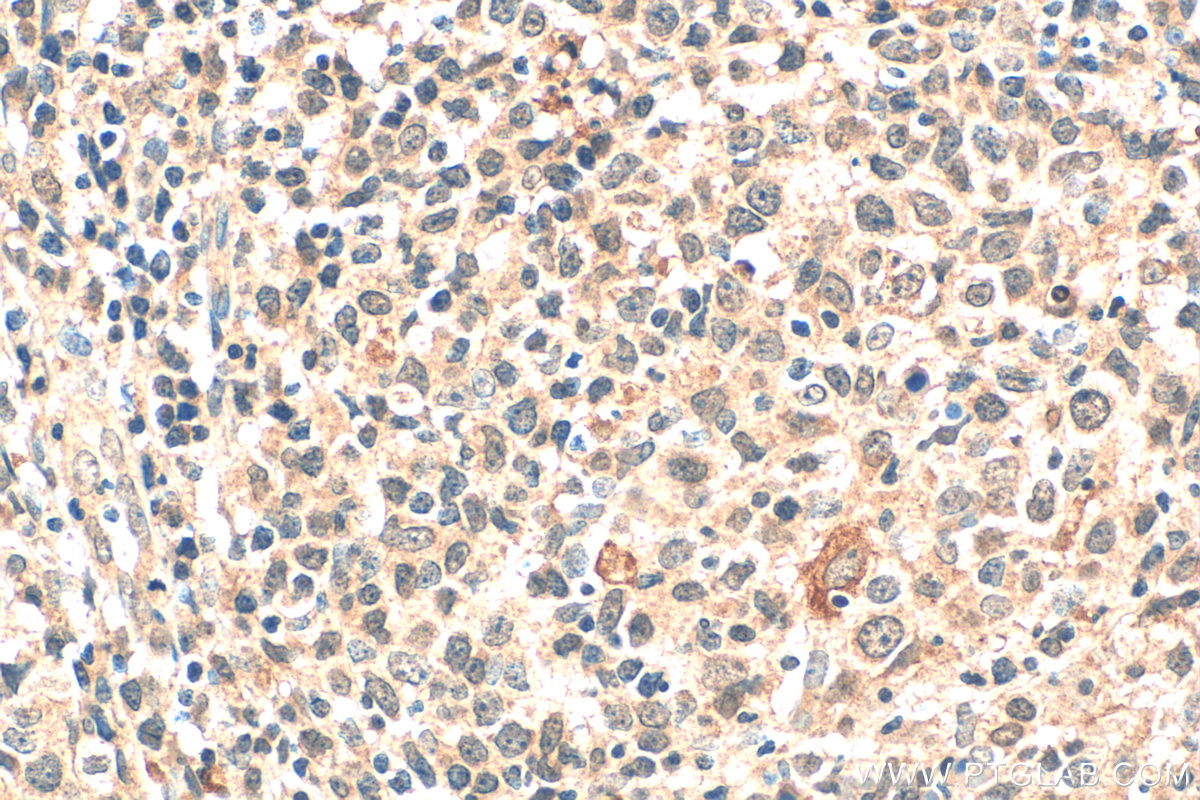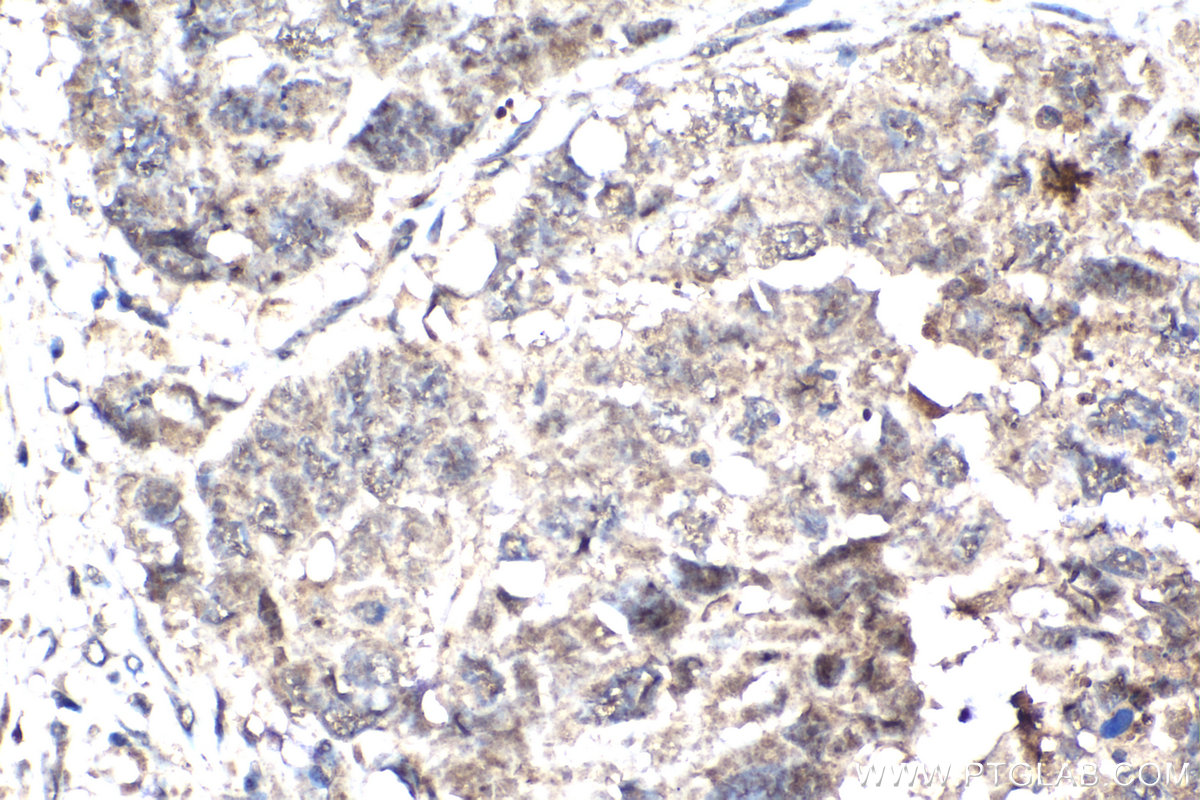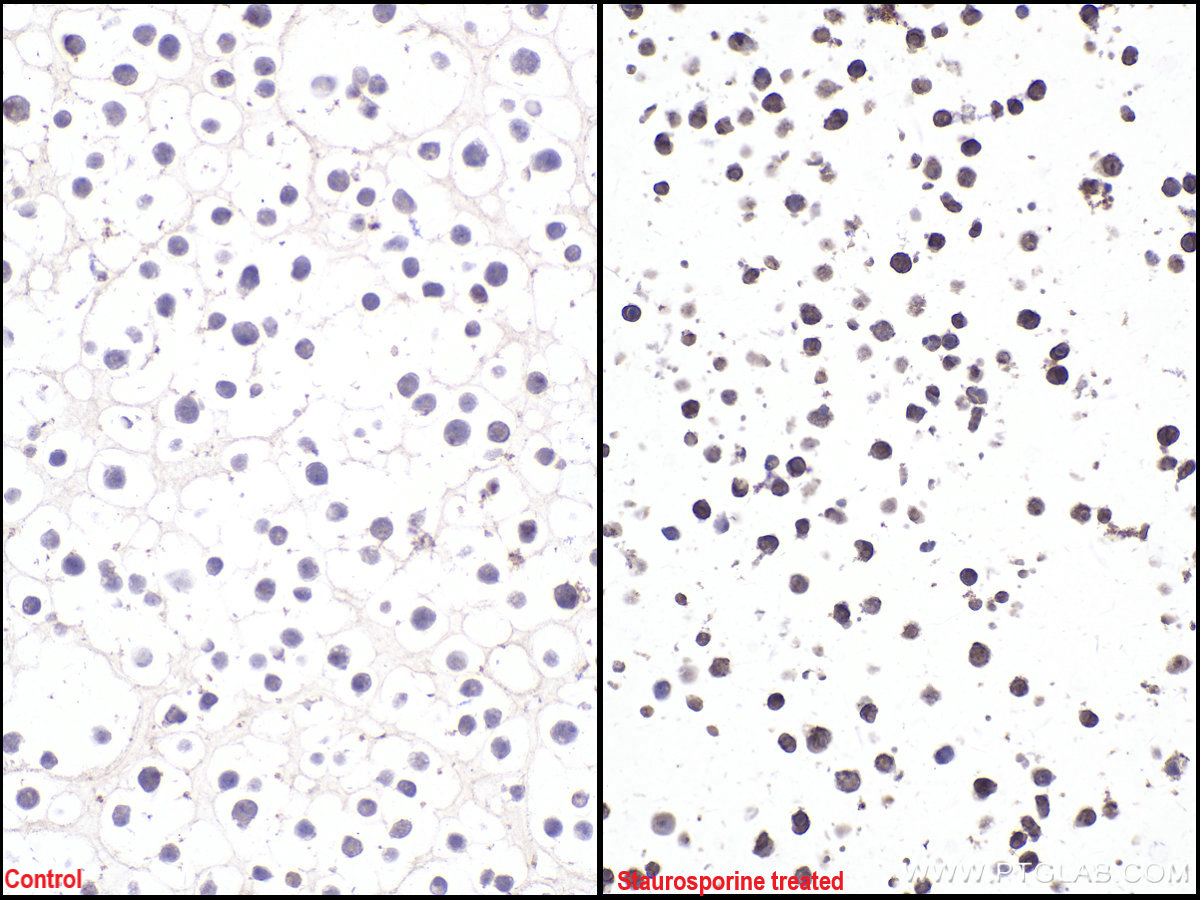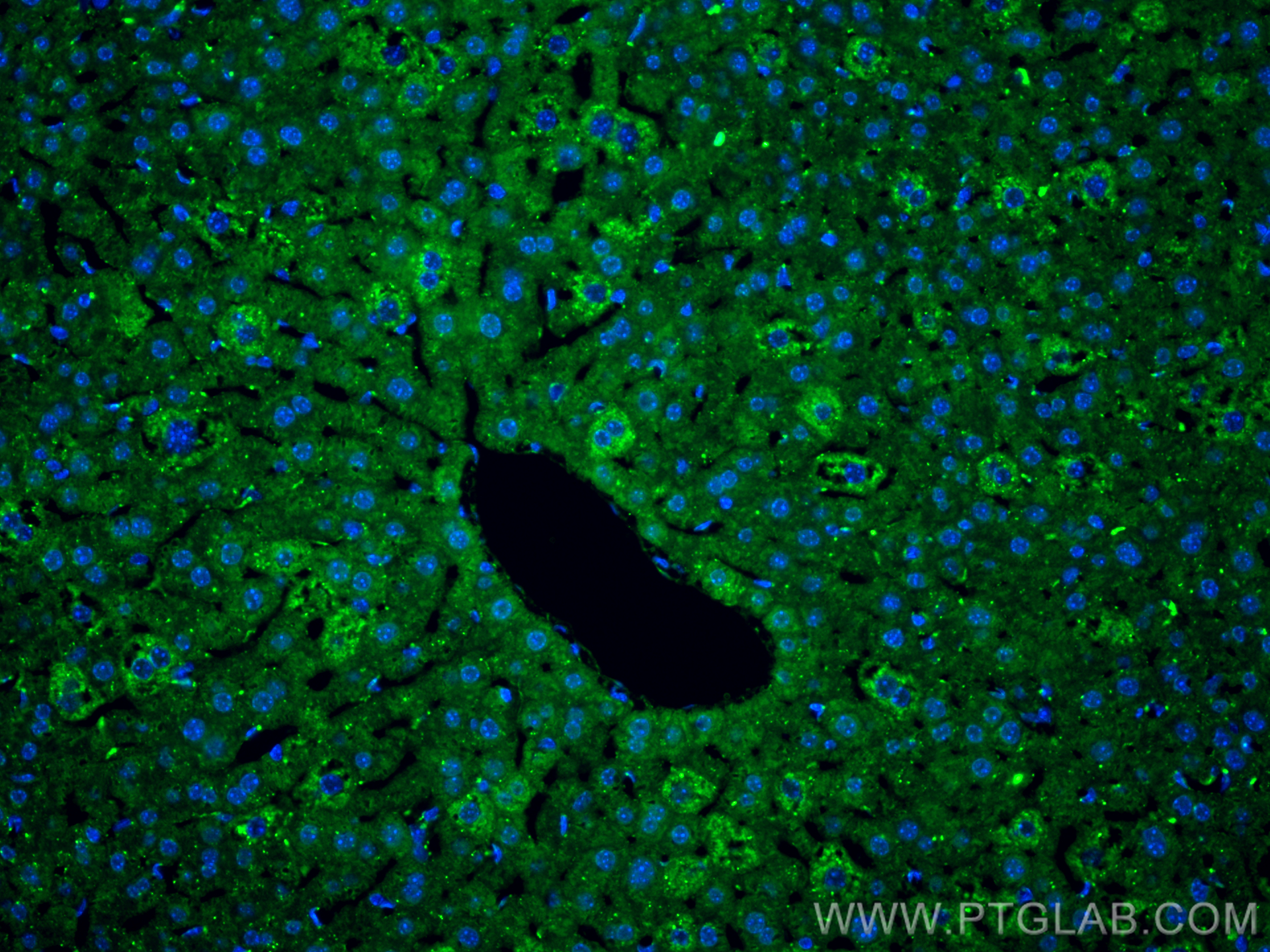验证数据展示
经过测试的应用
| Positive WB detected in | Jurkat cells, A2780 cells, BV-2 cells, HepG2 cells, HSC-T6 cells, Ramos cells |
| Positive IP detected in | Staurosporine treated Jurkat cells |
| Positive IHC detected in | human lymphoma tissue, Jurkat cells Note: suggested antigen retrieval with TE buffer pH 9.0; (*) Alternatively, antigen retrieval may be performed with citrate buffer pH 6.0 |
| Positive IF-P detected in | mouse liver tissue |
| Positive IF/ICC detected in | 1 μM Staurosporine (1/3/6 hour) treated Jurkat cells, 50 μM Cisplatin (18 hours) treated BV-2 cells, 1 μM Staurosporine (1/3/6 hour) treated HSC-T6 cells |
| Positive FC (Intra) detected in | 1 μM Staurosporine (3 hours) treated Jurkat cells, 50 μM Cisplatin(18h)treated BV-2 cells |
推荐稀释比
| 应用 | 推荐稀释比 |
|---|---|
| Western Blot (WB) | WB : 1:5000-1:50000 |
| Immunoprecipitation (IP) | IP : 0.5-4.0 ug for 1.0-3.0 mg of total protein lysate |
| Immunohistochemistry (IHC) | IHC : 1:1000-1:4000 |
| Immunofluorescence (IF)-P | IF-P : 1:200-1:800 |
| Immunofluorescence (IF)/ICC | IF/ICC : 1:500-1:2000 |
| Flow Cytometry (FC) (INTRA) | FC (INTRA) : 0.20 ug per 10^6 cells in a 100 µl suspension |
| It is recommended that this reagent should be titrated in each testing system to obtain optimal results. | |
| Sample-dependent, Check data in validation data gallery. | |
产品信息
68773-1-Ig targets Cleaved Caspase 3/P17/P19 in WB, IHC, IF/ICC, IF-P, FC (Intra), IP, ELISA applications and shows reactivity with human, mouse, rat samples.
| 经测试应用 | WB, IHC, IF/ICC, IF-P, FC (Intra), IP, ELISA Application Description |
| 文献引用应用 | WB, IHC, IF |
| 经测试反应性 | human, mouse, rat |
| 文献引用反应性 | human, mouse, rat |
| 免疫原 |
Peptide 种属同源性预测 |
| 宿主/亚型 | Mouse / IgG1 |
| 抗体类别 | Monoclonal |
| 产品类型 | Antibody |
| 全称 | caspase 3, apoptosis-related cysteine peptidase |
| 别名 | CASP3, Caspase3, 2F7B8, CASP 3, CASP-3 |
| 计算分子量 | 32 kDa |
| 观测分子量 | 17 kDa, 19 kDa |
| GenBank蛋白编号 | NM_032991 |
| 基因名称 | Caspase 3 |
| Gene ID (NCBI) | 836 |
| RRID | AB_3665444 |
| 偶联类型 | Unconjugated |
| 形式 | Liquid |
| 纯化方式 | Protein G purification |
| UNIPROT ID | P42574 |
| 储存缓冲液 | PBS with 0.02% sodium azide and 50% glycerol, pH 7.3. |
| 储存条件 | Store at -20°C. Stable for one year after shipment. Aliquoting is unnecessary for -20oC storage. |
背景介绍
Caspases, a family of endoproteases, are critical players in cell regulatory networks controlling inflammation and cell death. Initiator caspases (caspase-2, -8, -9, -10, -11, and -12) cleave and activate downstream effector caspases (caspase-3, -6, and -7), which in turn execute apoptosis by cleaving targeted cellular proteins. Caspase 3 plays a key role in the activation of sterol regulatory element binding proteins (SREBPs) between the basic helix-loop-helix leucine zipper domain and the membrane attachment domain. Caspase 3 can form heterocomplex with other proteins. This antibody is specific for cleaved caspase 3, and does not recognize full length caspase-3. The cleaved P17 and P19 fragment might form complex and shows at around 30-35 kDa by western blot (PMID: 25501826).
实验方案
| Product Specific Protocols | |
|---|---|
| IF protocol for Cleaved Caspase 3/P17/P19 antibody 68773-1-Ig | Download protocol |
| IHC protocol for Cleaved Caspase 3/P17/P19 antibody 68773-1-Ig | Download protocol |
| IP protocol for Cleaved Caspase 3/P17/P19 antibody 68773-1-Ig | Download protocol |
| WB protocol for Cleaved Caspase 3/P17/P19 antibody 68773-1-Ig | Download protocol |
| Standard Protocols | |
|---|---|
| Click here to view our Standard Protocols |
发表文章
| Species | Application | Title |
|---|---|---|
Biomaterials Myocardial delivery of miR30d with peptide-functionalized milk-derived extracellular vesicles for targeted treatment of hypertrophic heart failure | ||
Clin Transl Med PINK1 modulates Prdx2 to reduce lipotoxicity-induced apoptosis and attenuate cardiac dysfunction in heart failure mice with a preserved ejection fraction | ||
Int J Biol Macromol A functionalized lignin dual network nanoplatform for enhanced cancer therapy by triggering reactive oxygen species self-circulation | ||
Int J Biol Macromol Schizophyllum commune fruiting body polysaccharides inhibit glioma by mediating ARHI regulation of PI3K/AKT signalling pathway | ||
Mol Neurobiol FGF21 Alleviates Hypoxic-Ischemic White Matter Injury in Neonatal Mice by Mediating Inflammation and Oxidative Stress Through PPAR-γ Signaling Pathway | ||
Regen Ther miR-145-enriched BMSCs-derived exosomes ameliorate neurogenic erectile dysfunction in aged rats via TGFBR2 inhibition |

